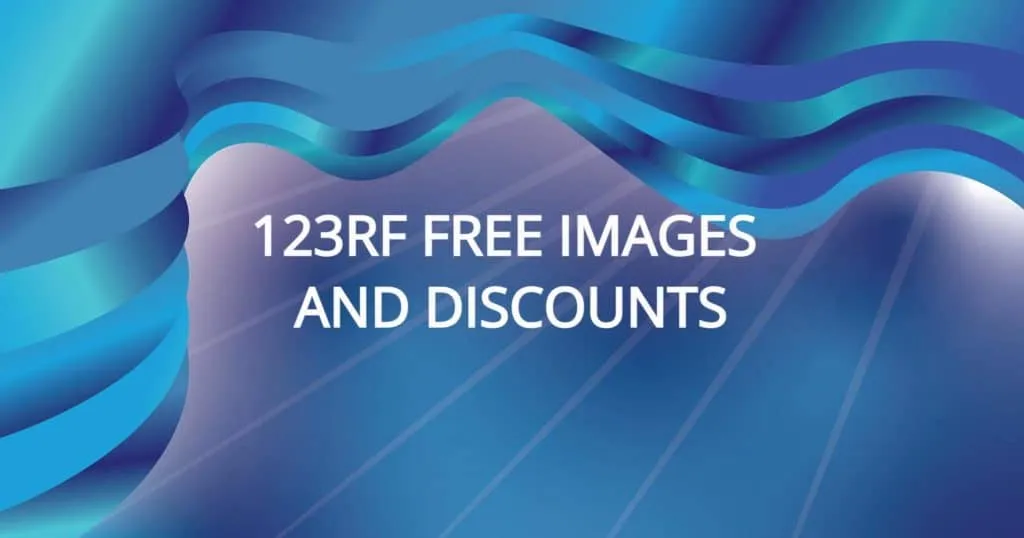In today’s digital landscape, where attention spans are shorter than ever, the importance of visual content in blogging cannot be overstated. Readers are often bombarded with text-heavy articles and may find it challenging to engage with content that lacks visual appeal. As a blogger, incorporating stunning images can significantly enhance the reader's experience and keep them coming back for more.
Visual content serves as a powerful tool to communicate ideas effectively, making complex topics easier to digest. Whether it’s a captivating header image, infographics, or illustrations, visuals can break up long blocks of text and add a layer of interest that words alone may not convey. In this blog post, we’ll explore how using high-quality images from 123RF can elevate your blog posts and make them more engaging for your audience.
The Importance of High-Quality Images

High-quality images play a crucial role in the overall impact of your blog posts. Here are a few reasons why investing in quality visuals is a game changer:
- First Impressions Matter: A great image can captivate readers instantly. When they land on your blog, a striking visual can make them stop scrolling and start reading.
- Boosts Engagement: Blog posts with relevant images get 94% more total views than those without. People are naturally drawn to visuals, making your content more shareable and increasing its reach.
- Improves Comprehension: Supporting your text with images helps clarify your message. Infographics, charts, and illustrations can simplify complicated information, making it easier for readers to grasp your points.
- Enhances Aesthetic Appeal: A well-designed blog with high-quality images looks more professional, reflecting your brand’s commitment to quality. This can create a positive perception of your content, encouraging readers to explore further.
- SEO Benefits: Properly optimized images can improve your search engine rankings. Using alt text and descriptive file names can help search engines understand your content, driving more organic traffic.
In summary, high-quality images are not just a luxury; they are an essential component of effective blogging. By utilizing resources like 123RF, you can find the perfect visuals to complement your writing, making your blog posts stand out in a crowded online space.
Also Read This: Design Engaging Videos with Canva Video Template
Getting Started with 123RF

So, you're ready to spice up your blog posts with some eye-catching images? Well, let me introduce you to 123RF, an amazing resource for stock photos, vectors, and videos that can elevate your content. Getting started is a breeze! Here’s how you can dive right in:
- Create an Account: Head over to the 123RF website and sign up for a free account. You’ll need to fill in some basic information, but don’t worry—it only takes a few minutes!
- Explore the Library: Once you’re logged in, start browsing the extensive library. You can search for specific keywords, or if you’re feeling adventurous, explore categories like “Nature,” “Business,” or even “Food & Drink.”
- Use Filters: Narrow down your search with filters. You can sort by image type, orientation, color, and even the licensing type. This makes it easy to find exactly what you're looking for!
- Download Your Picks: Found an image you love? Great! Just select the resolution you need and hit the download button. If you’re using a free account, you might have some limitations on the number of downloads, so keep that in mind.
- Attribution: Remember, some images require attribution. Make sure to check the licensing details to give credit where it’s due!
And that’s it! You’re all set to enhance your blog posts with stunning visuals from 123RF. Happy blogging!
Also Read This: Canva Image Transparency
Choosing the Right Images for Your Blog

Now that you’re all set up with 123RF, let’s talk about how to choose the right images for your blog. Picking the right visuals is crucial; they can draw readers in and keep them engaged. Here are some tips to make sure you’re making the best choices:
- Relevance is Key: Choose images that complement your content. For example, if you’re writing about a travel destination, an image of that location can enhance the reader’s experience.
- Quality Matters: Look for high-resolution images. Blurry or pixelated pictures can detract from your blog’s professionalism. Always choose images that are crisp and clear.
- Brand Alignment: Make sure the images align with your brand's identity. If your blog has a playful tone, opt for colorful and fun images. Conversely, if you’re aiming for a more serious vibe, choose subdued tones and professional-looking visuals.
- Emotional Connection: Images that evoke emotions can be very powerful. Consider what feelings you want to elicit in your readers and choose photos that resonate with those emotions.
- Stay Consistent: Consistency in style can help your blog feel cohesive. Stick to a color palette or a particular style of photography to create a harmonious look across your posts.
In short, the right images can take your blog from good to great! So, take your time, browse carefully, and let your creativity shine!
Also Read This: Understanding YouTube's Daily Video Upload Limits for Content Creators
Integrating Images into Your Blog Design
When it comes to blogging, visuals play a crucial role in enhancing your content and keeping your readers engaged. Integrating images into your blog design can make your posts more appealing and easier to digest. Here are some tips to seamlessly incorporate images:
- Choose the Right Placement: Think about where your images will have the most impact. Placing them at the beginning of your blog post can grab attention, while interspersing them throughout the text can break up long paragraphs and maintain reader interest.
- Maintain a Consistent Style: Stick to a cohesive image style that aligns with your blog’s theme. Whether it’s bright and colorful or minimalist black and white, consistency helps in creating a professional look.
- Utilize White Space: Don’t overcrowd your posts with images. Allow for ample white space around your visuals to let them breathe. This helps in making your content look organized and less cluttered.
- Image Sizes Matter: Ensure your images are the right size for your layout. Oversized images can slow down load time, while too-small images may not capture attention. Find a balance that works for your design.
- Use Captions Wisely: Captions can provide context to your images. Use them to explain what the image is about or to add a touch of humor, making your content more relatable.
Incorporating images from 123RF into your blog design not only enhances the aesthetic but also elevates the overall reading experience. Remember, a well-designed blog with the right images can make a lasting impression!
Also Read This: Is Dailymotion Converter Legal
Optimizing Images for SEO
Optimizing your images for SEO is just as important as the written content itself. Search engines can’t “see” images in the same way humans do, so you need to provide context. Here’s how to optimize your images effectively:
- Use Descriptive File Names: Instead of generic names like “IMG1234.jpg,” use descriptive filenames that reflect the content of the image. For instance, “delicious-chocolate-cake.jpg” gives context to both users and search engines.
- Add Alt Text: Alt text is crucial for accessibility and SEO. Describe what the image is about in a few words, using relevant keywords where appropriate. This helps search engines index your images correctly.
- Choose the Right Format: Different image formats serve different purposes. JPEGs are great for photographs, while PNGs work well for graphics with fewer colors. WebP is another format that provides high-quality images with smaller file sizes.
- Compress Images: Large image files can slow down your blog, which isn’t great for SEO. Use tools to compress images without losing quality. Fast-loading pages improve user experience and boost your search rankings.
- Include Images in Sitemaps: If you have a lot of images, consider including them in your XML sitemap. This helps search engines discover and index your images more efficiently.
By optimizing your images with these strategies, you not only enhance the visual appeal of your blog but also improve its visibility in search engine results. So, why wait? Start integrating and optimizing today!
Also Read This: How to Cancel Your YouTube TV Subscription
Best Practices for Image Usage
When it comes to enhancing your blog posts with images from 123RF, there are several best practices you should keep in mind. These tips will not only improve the visual appeal of your content but also ensure that your images serve their intended purpose effectively.
- Choose Relevant Images: Always select images that relate directly to your blog content. This helps in conveying your message more clearly and keeps your audience engaged.
- Optimize Image Size: Large images can slow down your site, leading to a poor user experience. Use tools to compress your images without losing quality before uploading them to your blog.
- Use Alt Text: Adding descriptive alt text to your images is crucial for SEO and accessibility. It helps search engines understand what your image is about and provides context for visually impaired readers.
- Maintain Consistency: Aim for a consistent style, color scheme, and tone across all images in your blog. This creates a cohesive look that reinforces your brand identity.
- Credit the Source: If required, always provide proper attribution for images. This not only shows respect for the creators but also builds trust with your audience.
- Consider Licensing: Make sure that you are aware of the licensing agreements of the images you choose. Using images without the proper rights can lead to legal issues.
By following these best practices, you can effectively use 123RF images to enhance your blog posts, making them more engaging and visually appealing.
Conclusion and Final Tips
In conclusion, incorporating images from 123RF into your blog posts can significantly elevate the quality of your content. Not only do images break up text, making it easier to read, but they also help illustrate your points more vividly. Here are some final tips to keep in mind:
- Experiment with Different Formats: Don’t be afraid to mix it up! Use photos, illustrations, infographics, and even videos to keep your content fresh and interesting.
- Engage with Your Audience: Ask readers for their feedback on the images used. This can give you insights into what resonates with them.
- Stay Updated: Regularly explore new images and trends on 123RF. Keeping your visuals updated can help maintain your blog’s relevance and appeal.
- Monitor Performance: Use analytics to see how images impact your blog’s performance. Track metrics like bounce rates and time spent on page to evaluate effectiveness.
Remember, great visuals can tell a story just as effectively as words. So go ahead and leverage 123RF images to create a visually stunning blog that captivates your readers!